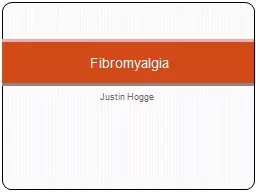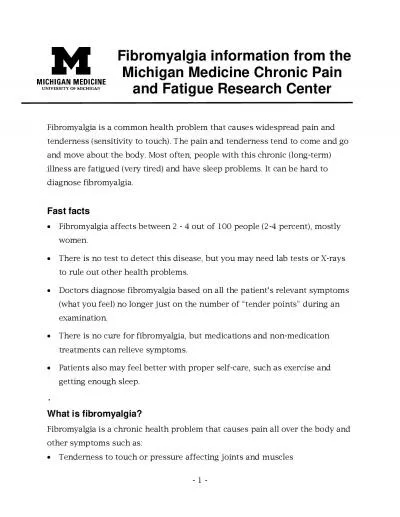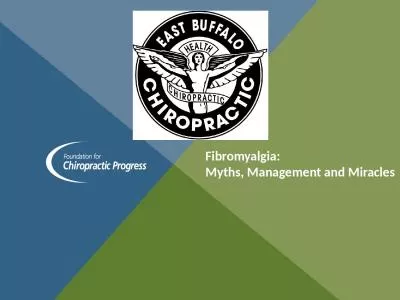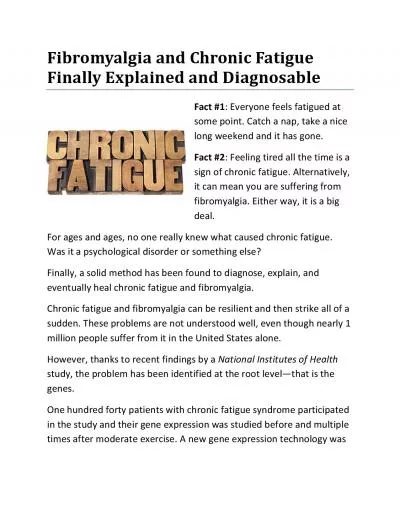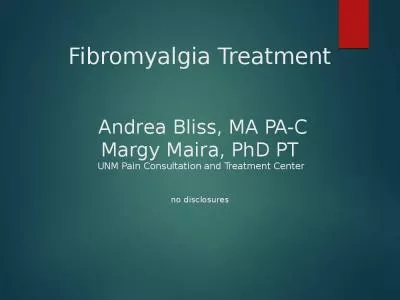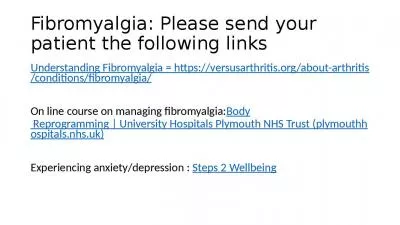PPT-FIBROMYALGIA Steven Smith, NP
Author : natalia-silvester | Published Date : 2019-11-18
FIBROMYALGIA Steven Smith NP Montgomery Alabama CONFLICT OF INTEREST STATEMENT Steven Smith NP has in years past been on the speaker bureau for Pfizer Inc though
Presentation Embed Code
Download Presentation
Download Presentation The PPT/PDF document "FIBROMYALGIA Steven Smith, NP" is the property of its rightful owner. Permission is granted to download and print the materials on this website for personal, non-commercial use only, and to display it on your personal computer provided you do not modify the materials and that you retain all copyright notices contained in the materials. By downloading content from our website, you accept the terms of this agreement.
FIBROMYALGIA Steven Smith, NP: Transcript
Download Rules Of Document
"FIBROMYALGIA Steven Smith, NP"The content belongs to its owner. You may download and print it for personal use, without modification, and keep all copyright notices. By downloading, you agree to these terms.
Related Documents


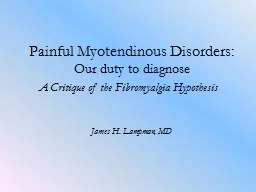
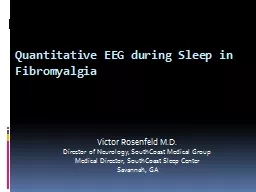
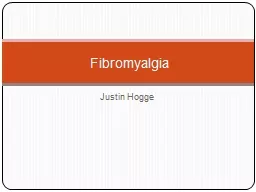
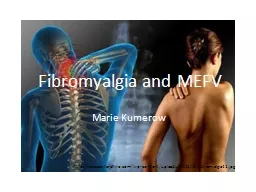
![[EBOOK] Box Set: Fibromyalgia and Fibromyalgia Diet: The Ultimate Guides to Managing Your](https://thumbs.docslides.com/882072/ebook-box-set-fibromyalgia-and-fibromyalgia-diet-the-ultimate-guides-to-managing-your-pain-and-reducing-your-suffering-white-l.jpg)
